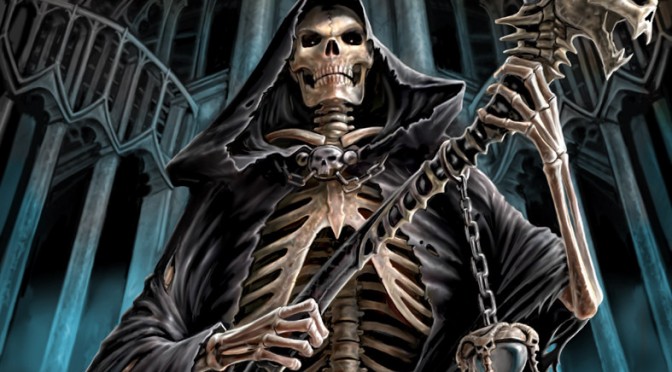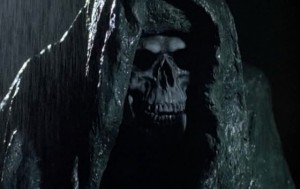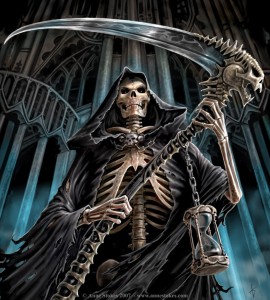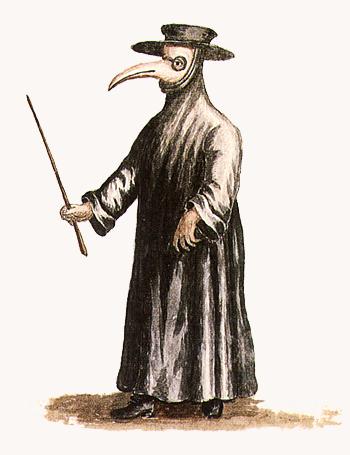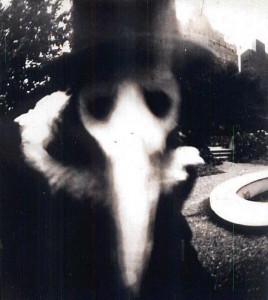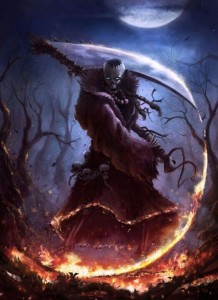In the Alters’ World (and the series of books found here), creatures of legend reveal themselves to the world. Born through genetic abnormalities, defects and mutations, the Alters have lived for centuries as outcasts of human society, hiding their true nature from the world while colorful stories have been written by many to describe what they’ve seen. How are these creatures different from what was described in the stories? What relationship do they have with humanity? Every entry of the Alterpedia will delve into a new creature from around the world. This week we cover:
Reapers
Two things are certain in this world: death and taxes. And while taxes are often represented by someone reaching into your pockets, death has long been represented by many faces across all civilizations and time periods. From robed skeletons to men simply in facepaint – death goes by many names and faces, all of which strike fear or admiration into the culture that created it.
But the thing we often see are rarely actually “death” itself, but rather agents of death meant to carry your soul to its next domain. These entities, most famously known as the Grim Reaper, are often complex figures that are both companion and hunter. They strike a fierce image, but often represent a form of mercy that few can truly understand.
So while we may all fear death, should we fear the Reapers?
Appearance
Mythology
The mythological depiction of the agents of death vary vastly across the many cultures of the world. The gods and messengers of death are among the most ancient of figures in all mythology and often predated many other deities in their religions. The result is that those creatures which bring death to the living are often as different as the people who created them.
However, some details remain universal among the different versions. Often, these figures appear to be a victim of the very force they bring to bear, showing the signs of death and decay. These decayed figures were often very lean, gaunt, and pale. Sometimes this would result in discolored skin, often blues or greens, showing the cold or even mossy nature of their current state. The cold was often very closely associated to them, particularly in the north where the cold was fatal, and the touch of these entities is often described as like ice.
In extreme cases, this cold, lifeless nature may even result in skin that would decay away entirely in places, resulting in not just bony features but fully skeletal frames. This was not always across the entire body, however, as many would appear mostly alive with other features which happened to act as tells. In some cases, this half dead nature was entirely noticeable from the beginning, such as with Hel, one the Norse goddesses of death, who appeared with half of her body as a corpse.

However, two depictions of death are more famous than any other. The first of these is the infamous Grim Reaper of old, a skeleton robed in black and carrying a great scythe used to harvest souls. Though the name of “Grim Reaper” itself didn’t appear until relatively recently in history, the image of the skeleton bearing a scythe has existed for centuries, the black robes first being introduced in the 15th century and creating a figure that has crossed cultures around the world.
On the other side of the coin, the other most popular depiction has been that of the angel of death, an angelic being appearing as an unnaturally beautiful human. This figure has long been seen as the compassionate side of death, a figure of mercy who has come to end the suffering of the mortal world. This version of death is often seen as a friend, there to travel with the dearly departed and gently guide them into the world beyond.
But in some examples, these traits have been crossed, causing some modern interpretations to consider that death may appear as what the recently departed expect them to appear as.
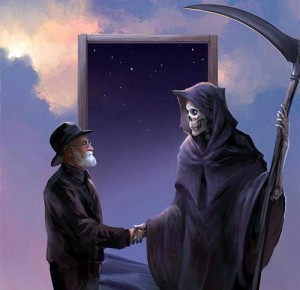
Alters
Reavers, as they are known within their own circles, are actually quite close to the angelic depiction given to them. Often with refined features and a lean build, the average Reaver is considered attractive in most circles – if somewhat androgynous. Their skin-tone ranges the full human spectrum and they are rarely looking decayed, but many could be considered “unnaturally thin” if they do not take proper care of themselves. Given these features, it can be difficult to tell between a Reaver or someone who is actually starving in some cases.

They’re often quite friendly and seem to be in a chipper mood, however, generally energetic and active. And, despite their model-like appearances, they are often in uniformed professions which put them in proximity with the dying. Typically, these individuals will appear tireless and with broad smiles regardless of their environments – which some may find creepy. However, in the past there were professions which they took which resulted in carving some of the images they became associated with.
During the major plague outbreaks of the middle ages, the profession of Plague Doctor arose and resulted in a distinctive uniform featuring dark clothes covering the entire body and a mask which allowed them to place scented items in the nose for the sake of “clearing the air”. Secretly, a great many of these Plague Doctors were Reaver volunteers, who would often appear with the sickest of individuals and never seemed to get sick unlike their human counterparts. Because of this, the pale white face and dark robes became heavily associated with the last person to be seen before death.
Abilities
Mythology
Death is a simple matter in terms of abilities in mythology. Timeless, ageless, and patient – death waits for all and carries the soul of the departed to the afterlife. it is said that the Reaper is invisible to those around and that they will only be seen by those who are about to part or who have already passed. they can travel anywhere in an instant, and can carry others with them if need be. It is also said that, should the Reaper choose to pass you by or fail to carry your soul away, you may end up somehow surviving your fate – even if that may not be natural.
The act of ending someone’s life is generally a simple gesture, an act taken with a simple movement such as taking the departed’s hand or simply making contact. Despite the presence of the scythe, it is rare that the Reaper actually needs to make use of the tool. Stories involving the use of the scythe generally involve those who are unwilling or attempting to flee. Because of this, for those who do not resist, the scythe is almost purely ceremonial and Death’s claiming of a person’s soul is often depicted as a gentle, if unwanted, event.
Alters
Reavers do not actually bring death to the people around them. First arising during the earliest plague outbreaks, the Reaver subset of the Alter race is actually a variation of the Succubus and Incubus type which adapted to one of the most dangerous environments possible. Sensitive to particular chemicals and lacking certain chemicals of their own, the Reavers are drawn towards the terminally ill much in the same way animals can detect things such as cancer. This trait seems counter-intuitive at first until realizing that Reavers are immune to the diseases which they sense and their attraction is due to a somewhat parasitic nature.
Like other creatures in their subtype, Reavers have adapted their personal chemistry to guard against disease in exchange for being chemically imbalanced in other regards. To adjust to this adaptation, Reavers have further adapted to feed off the biochemistry of others around them, especially the altered biochemistry of those with severe illnesses, which results in the bodies of the victim creating a situation the Reaver is capable of taking advantage of. One example of this is that Reavers are naturally of a lower body temperature than the baseline human, and are naturally drawn to the warmth of those who present with a fever. Another is that the chemicals they detect often trigger reactions in Reaver brains to give them a natural high. Either way, the Reaver’s biochemistry is altered by those they interact with, fulfilling needs by proximity.
One theory as to why this occurs is that Reavers first developed at a time when mortality rates were incredibly high. It’s believed that, in the face of what could have caused crippling depression, the ancestors of the Reaver race adapted to respond positively to these chemical changes and find a morbid curiosity in these events. In essence, Reavers maintained their sanity by chemically adapting to be compatible with otherwise horrible situations.
Contrary to popular belief, however, the Reaver race does not actually “feed” on the people in their environment. The idea they draw life out of others is more due to coincidence than actual events, and the stigma associated with this belief is unsurprisingly difficult to escape. As a result, even among Alters, Reavers are particularly misunderstood and many still believe them to be a fully parasitic. Even members of law enforcement tasked with policing the Alter population (ACTF) remain under the impression that these creatures are actively drawing life out of the ill.

Because of this impression, study into Reaver abilities have been limited. What is known is that they are immune to most disease, benefit from chemical changes in those around them, can live an incredibly long time, and possess naturally heightened senses. However, it is also theorized, but not confirmed, that Reavers can create a symbiotic bond with those around them which allow them to adjust another’s biochemistry (much in the same way Succubi do). Whether this ability actually exists, and how Reavers can use it, is up for debate. Some believe this allows them to reduce another’s suffering, or potentially increase their immune response. Others believe this allows them to increase symptoms to enhance their feeding. No theory has been verified. If the ability is confirmed, however, some conclusions can be drawn based on their…
Behavior
Mythology
The depiction of reapers greatly depends on someone’s opinion of death. Those who fear it will often describe the actions of reapers as “merciless” and swift. These descriptions are often associated with the more fearsome visuals of creatures such as the Grim Reaper. However, those who believe that death is without malice will often see the figure as sympathetic but fair. All things owe a death, and thus all people are equal in the eyes of the reaper.
In contrast, the angels of death, or the Valkyries of Norse mythology, will often be depicted as judge as well as ferrier. These entities, acting as the gatekeepers of the afterlife rather than simply escorts, will determine the worthiness of the soul they have encountered and take them to their proper place. These versions are often associated with religions or mythologies that have some variation of a Heaven or Hell, with those who have lived the correct life being taken to one and those who have failed to another. However, even in these versions, if one has lived a righteous life they will find this version of death to be a gentle companion rather than punitive force.
Alters
Reavers, on the other hand, are known to be among the most charitable races in the world. Naturally drawn towards the infirmed, Reavers are often involved in the medical profession and will take great pains to preserve the lives of those they’ve been drawn toward. In fact, statistically, Reavers are more likely to be responsible for saving someone’s life than ending it even in times of conflict such as war.
The reasons for this are unclear due to the difficulty of getting accurate information on the race. One prominent theory is that Reavers, while naturally drawn towards the ill, form a deep bond to those around them due to their chemical interactions. In this way, the Reavers may become imprinted on those they’re treating and wish to see their health improve. Another common theory is that they are trying to preserve patients for as long as possible to extend the chemical interactions to the greatest length possible. Neither of these has been confirmed, and other explanations have been proposed, but research into their behavior is still slow.
However, superficially the Reavers are known to be incredibly friendly and happy even in the grimmest of circumstances. Reaver doctors (which make up the majority of Reavers) are known particularly for an excellent bedside manner and friendly demeanor they express almost universally. It is incredibly difficult to anger a Reaver, as they are almost always presenting with a natural high, and many of them are known to be incredibly patient with even the most difficult of people.
One thing that should be noted is that the few reports of Reavers becoming “angry” has been unpleasant for those involved. While normally mellow and friendly, a Reaver that is imbalanced enough to become agitated is generally well-versed in human anatomy and in a state where they may be inclined to use it in a negative fashion. These incidents are few and far between, however, and have generally been reserved for people responsible for the suffering of others. This is not to say they will become irrationally dangerous, as Reavers also have a very strict moral code of equal response. As such, provided you are not a burden on humankind…
You should be fine.
(I write novels. One of the Reaver doctors is in it, and he smiles a lot. I also write tweets…I do not smile a lot.)


